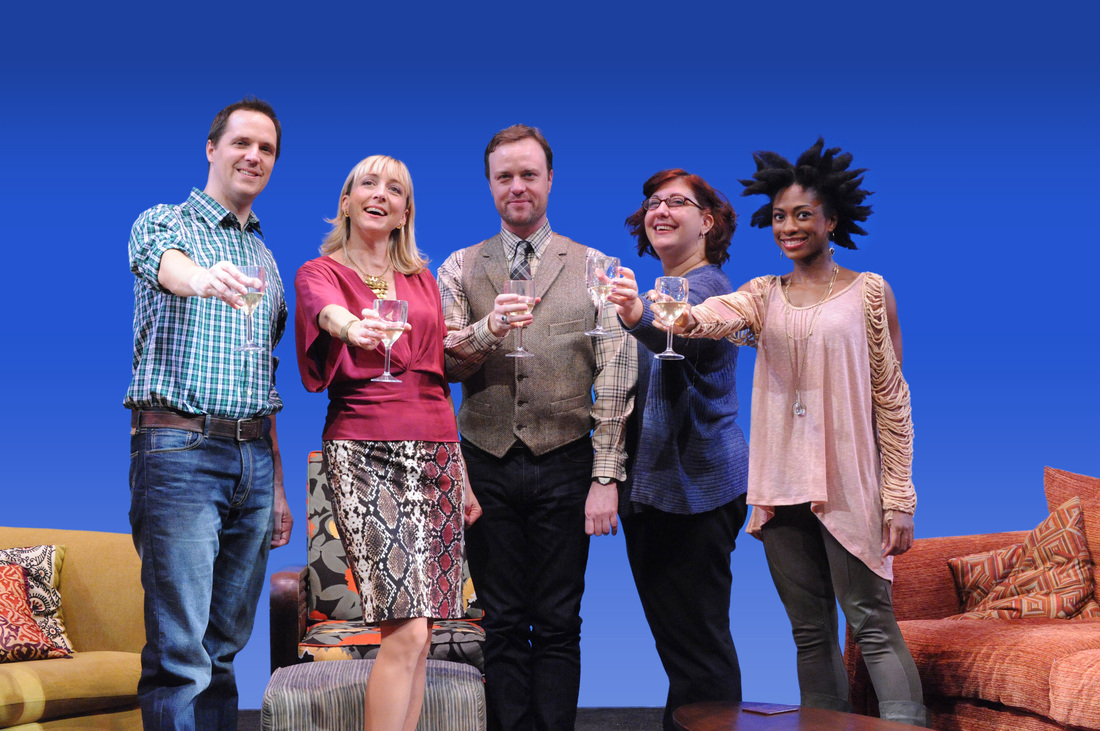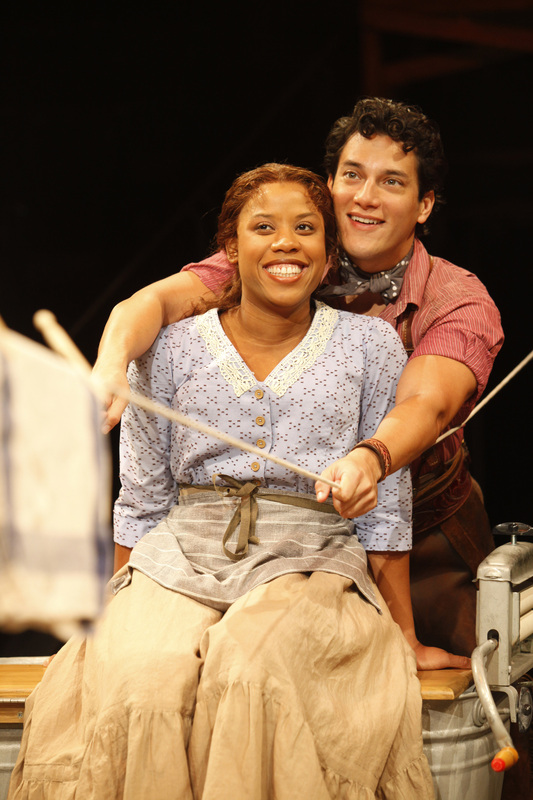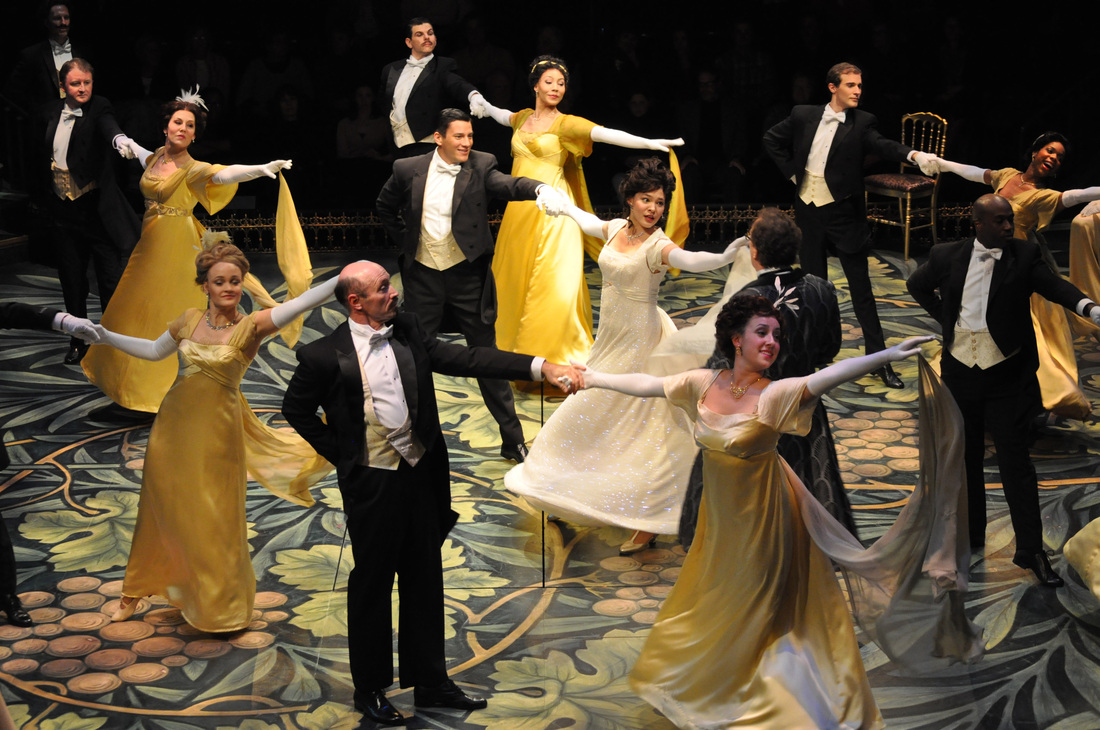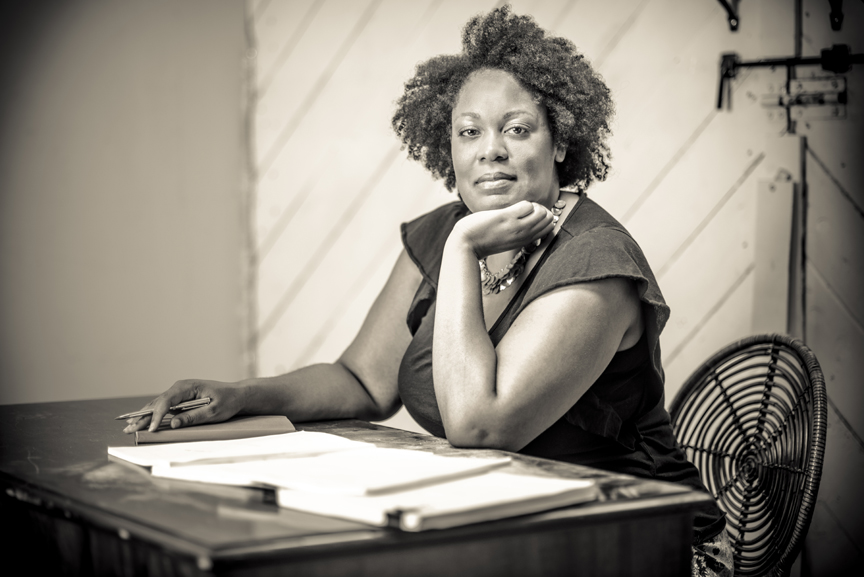|
JACQUELINE LAWTON: Why did you decide to get into theatre? Was there someone or a particular show that inspired you?
MOLLY SMITH: I don’t remember when my love affair with theater began, but I do remember my first childhood theater experience was a musical – watching a touring production of Camelot in my hometown of Yakima, Washington, starring Robert Goulet. I can remember everything – the red seat I sat in, the section of the balcony where my seat was, the light emanating from the stage, my own body leaning in. I was hooked. There were other moments. My mother had a stereo in her bedroom, and I played her LP recording of Oliver so often the record had deep grooves. I belted out the song Who Will Buy? loudly, hoping the whole neighborhood would marvel at the strength of my voice. I sat in the front row of a high school production of Bye Bye Birdie and swooned. Later I was in Teen Theater---I have been fascinated with theater since I was a child building stage settings and taking photographs... JL: How long have you served as Artistic Director at your company? What drew you to the position? What keeps you there? MS: This is my 14th season at Arena Stage. The theater and Zelda Fichandler, its founder, have had a huge impact on me as a student in Washington, DC. Though it was 10 times the size of Perseverance Theater, the theater company I started in Juneau, Alaska, I couldn’t pass up the opportunity to help continue its legacy. I love to be a part of a place that not only generates new work but also celebrates the American Giants with a contemporary resonance. There is no better community in which to do this kind of work because Washington DC has the smartest audience in the country. JL: What is the most valuable lesson you learned during your tenure? Also, what skills and traits do you feel a successful artistic director should have to support the health and growth of an organization? MS: One lesson that I’ve learned is the value of ‘friendly rivalry.’ I’ve come to appreciate the drive that a fellow director can provoke. I seek out those kinds of relationships. I want to work with people that inspire me with their intensity and push me past my own internal obstacles whether it is talking to actors about difficult issues, pushing designers to get what the production needs, or fighting to focus the company on the production. A ‘friendly rivalry’ simply makes you want your work to be better. Visual artists like Matisse and Picasso or Bonnard and Vuillard bruised and invigorated each other’s work for a lifetime. Sometimes I think in the theatre we are afraid of talking about these ‘friendly rivalries’ and yet I believe they are an important dynamic in making the work better. I believe the most essential skill for an artistic director is to build the ideal Artistic Home. I am not speaking of a brick and mortar home, but a home with a big heart and a big hearth supporting everyone who lives under its roof— artists, staff, audiences and trustees. It may be messy and full of the craziness and fire of everyday life but I like it. This home may look like a gorgeous gilded opera house, a black box or a church basement…it doesn’t matter. The key is to ensure that there is support and a nurturing atmosphere for the individuals who live within its walls— whatever those walls look like. JL: What excites you most about being an Artistic Director? What is your greatest challenge? MS: As an artistic director I am thrilled to be able to assemble and share such a diverse collection of stories with the remarkable DC audiences. I love digging into the range of American voices we’re able to produce and present here at Arena. I am moved by our American vitality. I have come a long way since my theater beginnings in the 70’s, but I still find navigating my way in the world of theater challenging. About the time I settle into a predictable period, life shifts and new challenges appear. I think of myself as an emotional visualist. As a director, I set up the circumstances in the rehearsal space for the actors to experiment, improvise and dig deep into the visual and emotional psychology of the story. I believe in the power of process in the rehearsal hall. Even in a musical we spend the first week around the table dissecting the story and the characters, asking tons of questions, doing character improvisations, digging into research. I’m sad to say that most productions no longer use process—it’s immediately only about staging, music and choreography. These elements of process—and they will be radically different for each person’s production—open up the artist to their imagination in the rehearsal hall. More and more these elements of process are being lost— are not being taught— are not being explored— because of a focus on bottom line thinking. But the use of the imagination is what I think theater offers to our community. Without it, we only focus on craft and not the art form. Yes, we are a craft and always will be—but we are also an art form. I think the real bottom line in the theater needs to be about this openness to creativity and the imagination whether it’s about a new play or revisiting a classic piece of literature. JL: If your work as an artistic director doesn’t pay the bills, what else do you do? Also, how do you balance your role leading an organization with your work as a director? Are you ever able to direct outside of your company? MS: The essential component in balancing my work as an artistic director and director is being a part of a dynamic team that supports me and supports the work. When I am directing for Arena Stage and when I’m directing elsewhere they are here. Edgar Dobie, Executive Director for Arena, and I have a strong and close relationship. He is a tremendously skilled administrator and producer and we are always in constant communication. Edgar and David Snider, our Director of Artistic Programming along with the Senior Staff are all extraordinary at what they do. JL: Looking at your body of work as an artistic director and a director, how conscious are you and selecting plays by women or people of color when deciding your season? Also, when it comes to hiring administrators, designers and other directors do you take race and gender into consideration? MS: I am always conscious about the voices that are included in each season we design at Arena. We are a theater that produces, presents and develops American theater. We tell the story of Americans. Women and people of color are a huge part of this story. So, yes, it is important to me that each season includes those stories. In this season of 10 shows there are 5 productions created by women and 5 directed by women and 3 productions directed by people of color. There are 5 productions with people of color in leading roles and all of the productions include leading roles for women. It is the same for administrators, designers and directors. I am a champion for diversity throughout the organization and I always hire the person that I believe is the best for the job. JL: DC audiences are ... MS: The most engaged I’ve ever seen. JL: DC actors and designers are ... MS: A growing, burgeoning pool that continues to propel this artistic community. JL: DC playwrights are ... MS: Courageous, constantly challenging themselves and this community. JL: DC critics are ... MS: Some of the smartest in the country. JL: What advice do you have for an up and coming theatre artists who have just moved to D.C.? MS: Protect the fire in your belly. This fire in the belly is about passion— and I want to tell you that you need to protect it, fuel it, feed it with ideas and goals—because many would like to take it away. There are too many people who throw water on an idea before it’s had a chance to grow, the ones who would rather give destructive rather than constructive criticism because then they can try to steal a piece of someone else’s fire. It’s up to you to protect the fire from all comers, to hold it in your belly—because the dreams you have today is what will get you up out of bed in the morning -- it’s what will take you through the difficult days as you pursue your lifelong goals. JL: What's next for you as a director and your company? MS: I have been invited to direct The Velocity of Autumn by Eric Coble on Broadway. Rehearsals are planned from the end of February through opening April 15th. I say ‘planned’ because our wonderful Producer Larry Kaye is raising money and focusing on looking for the right theater to produce the play in. Both need to be in place before the project goes forward—the road to Broadway is a complicated one… Actors are Estelle Parsons and Stephen Spinella and designers are Eugene Lee (set), Howell Binkley (lighting), Darron West (sound), and Linda Cho (costumes). The Velocity of Autumn is a powerful and funny play with a superb cast and design team. There are only a small handful of women directors on Broadway each year—I’d be thrilled to be one of them.
0 Comments
Your comment will be posted after it is approved.
Leave a Reply. |
My BlogI'm a playwright, dramaturg, and teaching artist. It is here where you'll find my queries and musings on life, theater and the world. My posts advocate for diversity, inclusion, and equity in the American Theatre and updates on my own work. Please enjoy!
Categories
All
Archives
June 2020
Reading List
|



